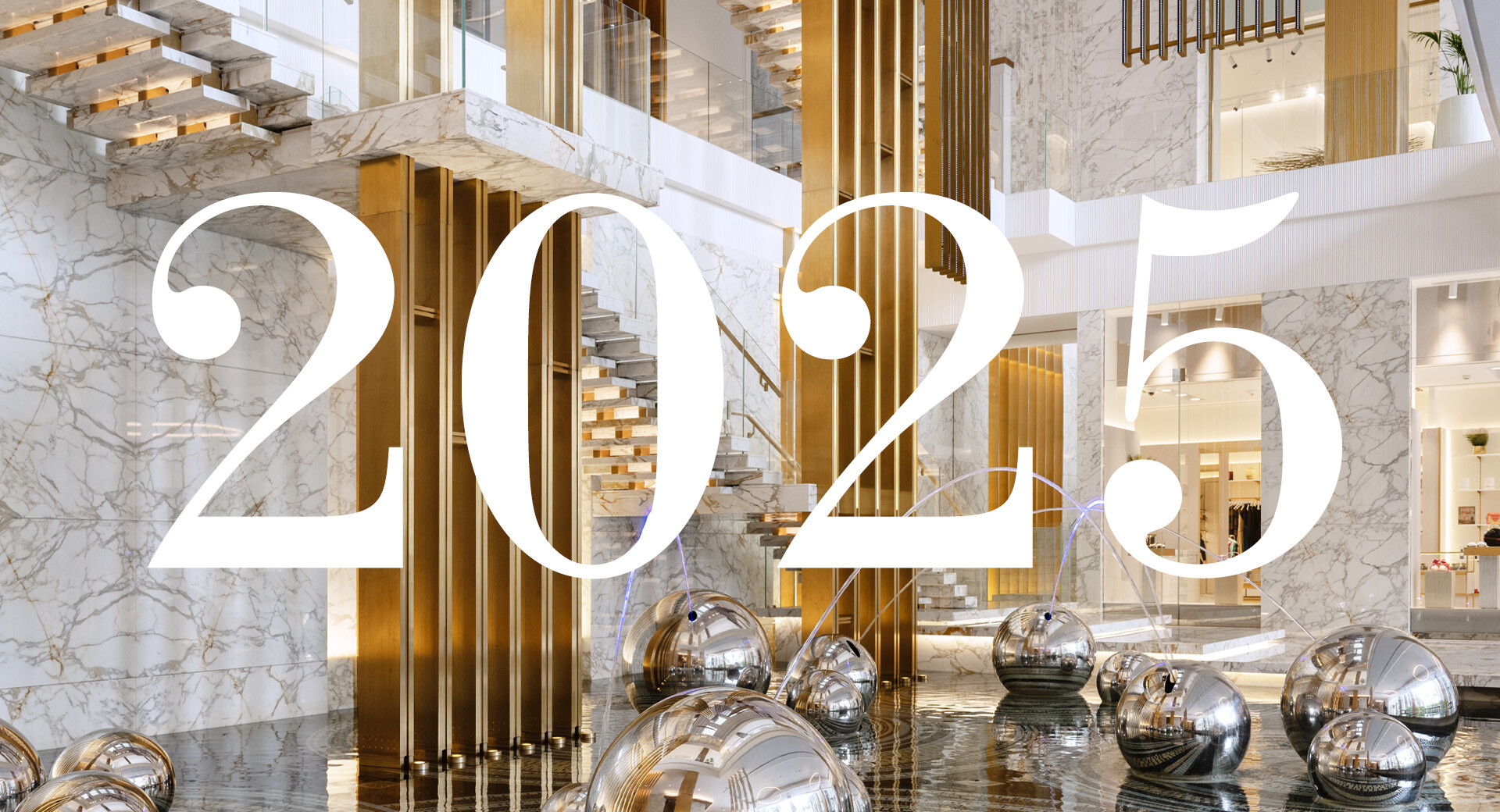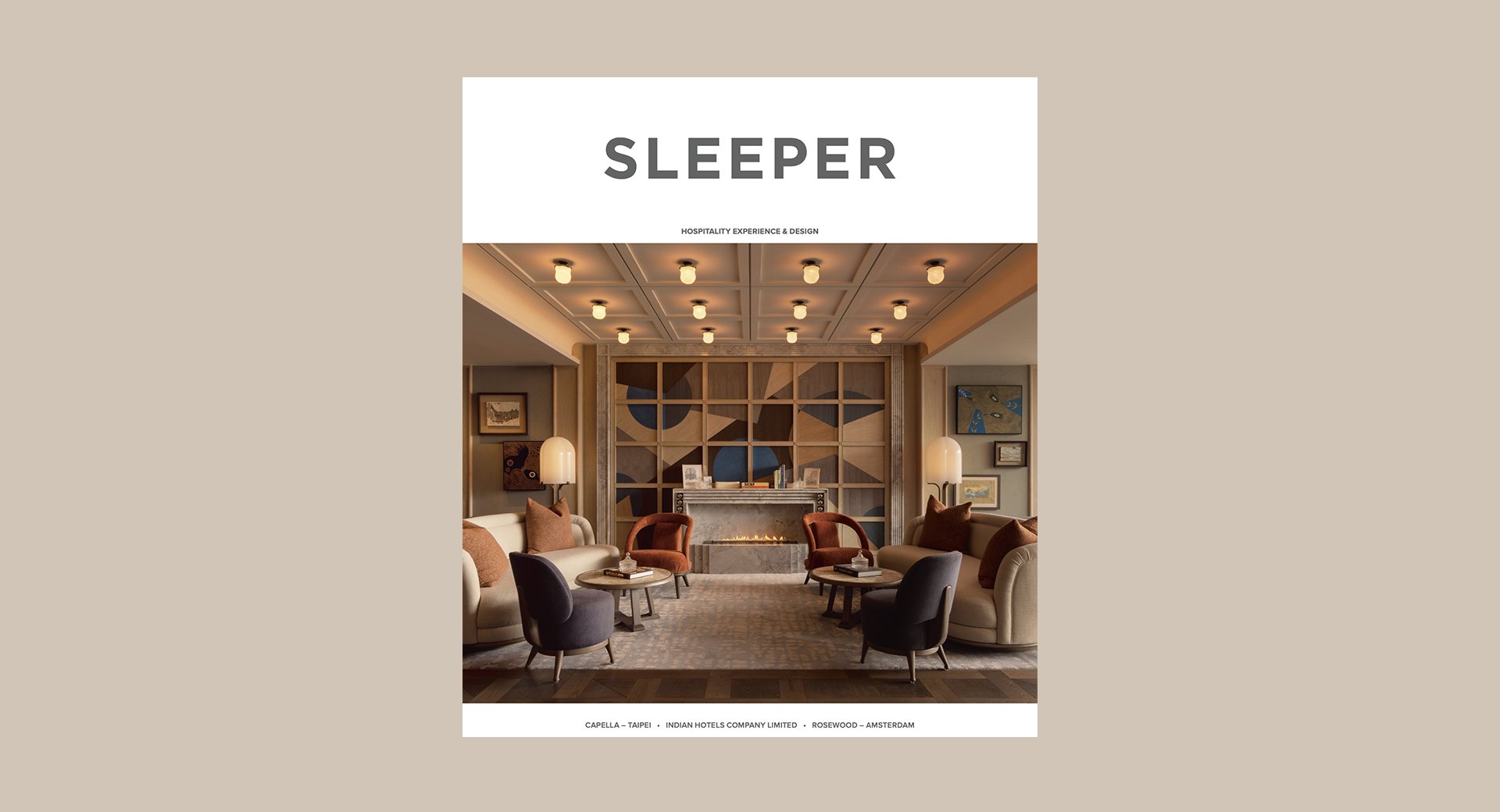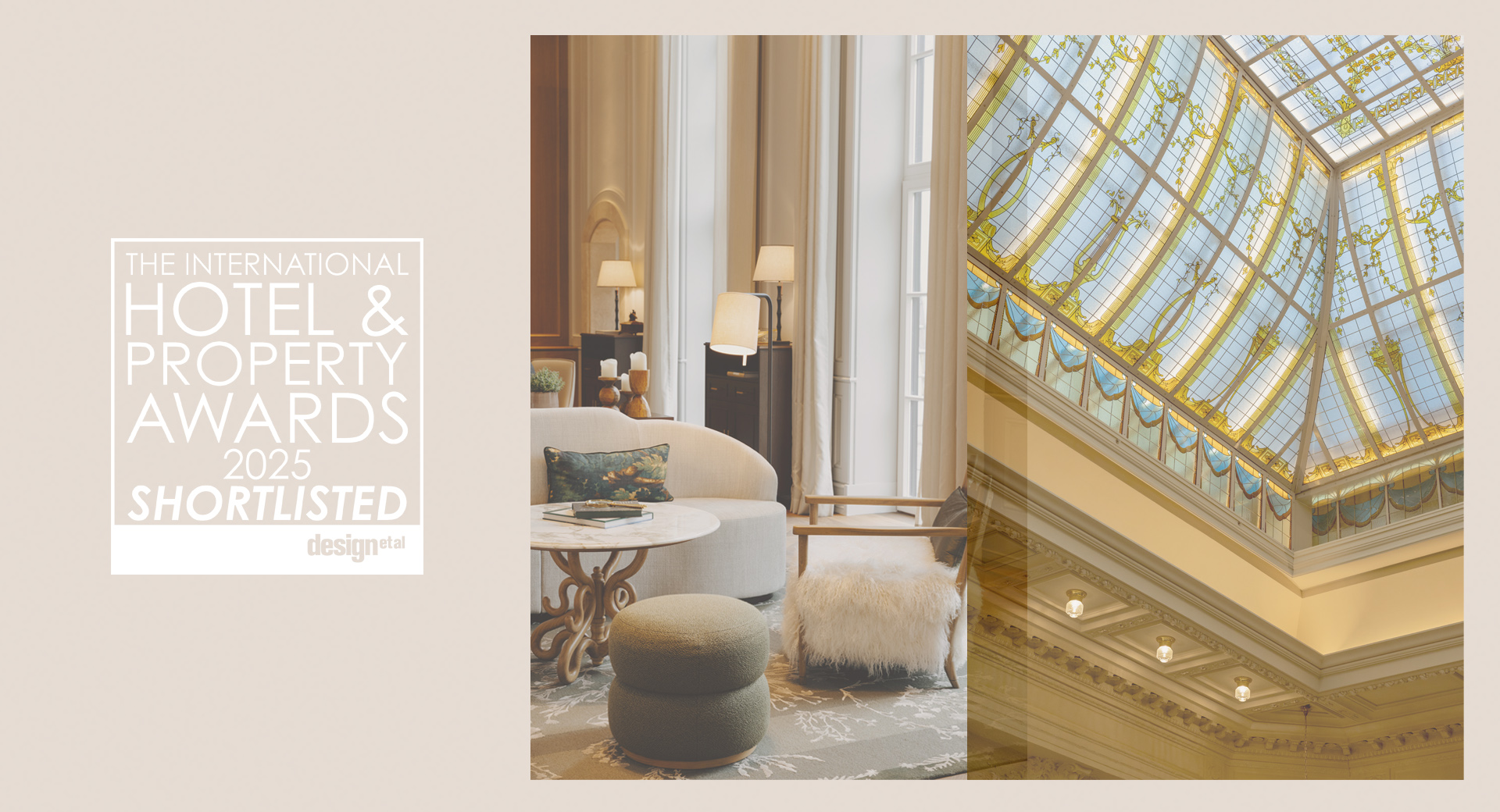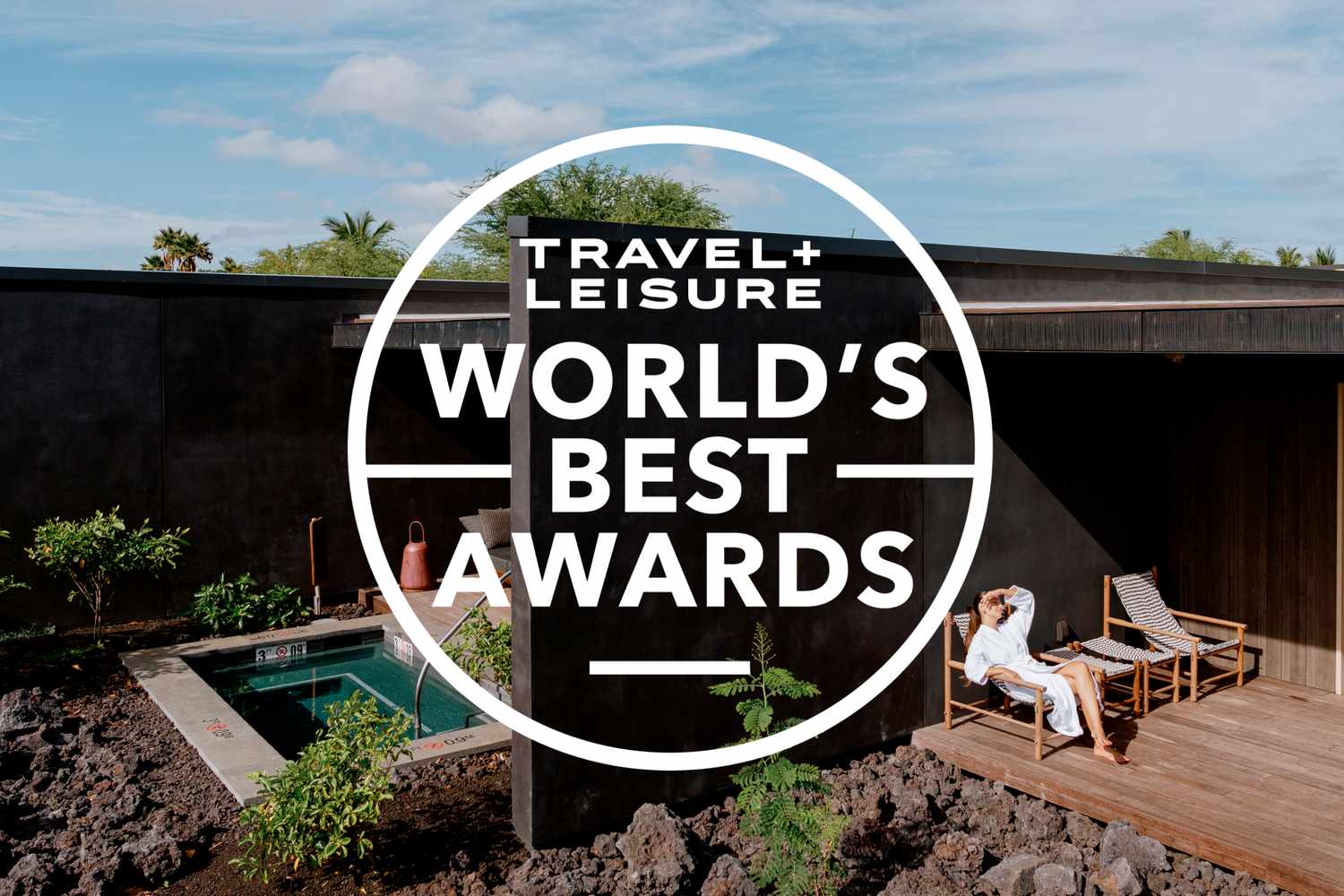What’s defining luxury hospitality design in 2025?
As we approach 2025, luxury hotels must go beyond traditional notions of opulence and embrace experience-driven, immersive hospitality that incorporates local culture, sustainability, and personalisation, creating sanctuaries for guests to relax and reflect.
Creating memorable environments that resonate deeply with guests is key to shaping the future of hotel design. From branded environments to thoughtful spatial planning, these emerging trends are reimagining the luxury hospitality landscape.
Below, we explore five key trends that are defining the future of hospitality design, with insights from G.A Group’s design leaders.

Experience Design: Shaping Memorable Moments
In luxury hospitality, design is evolving beyond opulence to create transformative, memorable experiences. Today’s guests seek personal, immersive moments of discovery, which is reshaping both the design process and guest expectations.
“Today’s guests want experiences that offer exclusivity, discovery, and immersion. In luxury hospitality, these experiences often hinge on unique, once-in-a-lifetime moments.” — Corinna Galdies, Director at G.A Group
Experience design has become central, focusing on multi-sensory environments and spaces that engage guests at every turn. Personalisation is a key driver—guests now expect to customise their experiences. At G.A Group, for one of our current projects, we’ve partnered with Downstream to create a customisable in-room spa shower, allowing guests to design their own relaxation routines.
Flow and connectivity have always been central to our design process, but in todays evolving landscape, they are more essential than ever for creating unique, immersive experiences. Unexpected design elements and fully immersive spaces are also pivotal in crafting memorable journeys.
At Atlantis The Royal, the guest journey is crafted as a series of surprising and engaging moments, designed to captivate and inspire awe. The vast scale of the space presented unique design challenges, creatively addressed through immersive elements that keep guests fully engaged at every step.
From the striking droplets sculpture in the lobby and the world’s largest jellyfish tank in the Resonant Bar, to the water courts framed by the iconic destination stair, each feature guides guests on a sensory and unforgettable journey. What began as an innovative response to spatial challenges has now become a defining benchmark in luxury hospitality design.
Guest-centric spatial design ensures that every element of the space enhances the guest journey.
“There is certainly a drive amongst current and future projects to focus more on user experience and ingenuity, to captivate guests. This shift is reflected in the layouts we are creating for projects, looking to inject more dynamic user experiences with activity and fun.
This could be in the form of a florist or ‘greenhouse’ element within a lobby, so guests see the plants tended to and hotel floral displays made up front of house, rather than back of house – turning this process into a part of the journey and experience.
In our current project Grand Hotel du Boulevard in Bucharest, for Corinthia, opening early 2025, the florist is situated adjectival to the intimate reception area, and guests are encouraged to walk through the florist with amazing scents and captivating displays, to access the Lounge and Bar areas. This experience within the boutique hotel evokes the feeling of a members club for those ‘in the know’” — Jessica Morrison, Senior Associate at G.A Group
Experience Design: Shaping Memorable Moments
In luxury hospitality, design is evolving beyond opulence to create transformative, memorable experiences. Today’s guests seek personal, immersive moments of discovery, which is reshaping both the design process and guest expectations.
“Today’s guests want experiences that offer exclusivity, discovery, and immersion. In luxury hospitality, these experiences often hinge on unique, once-in-a-lifetime moments.” — Corinna Galdies, Director at G.A Group
Experience design has become central, focusing on multi-sensory environments and spaces that engage guests at every turn. Personalisation is a key driver—guests now expect to customise their experiences. At G.A Group, for one of our current projects, we’ve partnered with Downstream to create a customisable in-room spa shower, allowing guests to design their own relaxation routines.
Flow and connectivity have always been central to our design process, but in todays evolving landscape, they are more essential than ever for creating unique, immersive experiences. Unexpected design elements and fully immersive spaces are also pivotal in crafting memorable journeys.
At Atlantis The Royal, the guest journey is crafted as a series of surprising and engaging moments, designed to captivate and inspire awe. The vast scale of the space presented unique design challenges, creatively addressed through immersive elements that keep guests fully engaged at every step.
From the striking droplets sculpture in the lobby and the world’s largest jellyfish tank in the Resonant Bar, to the water courts framed by the iconic destination stair, each feature guides guests on a sensory and unforgettable journey. What began as an innovative response to spatial challenges has now become a defining benchmark in luxury hospitality design.
Guest-centric spatial design ensures that every element of the space enhances the guest journey.
“There is certainly a drive amongst current and future projects to focus more on user experience and ingenuity, to captivate guests. This shift is reflected in the layouts we are creating for projects, looking to inject more dynamic user experiences with activity and fun.
This could be in the form of a florist or ‘greenhouse’ element within a lobby, so guests see the plants tended to and hotel floral displays made up front of house, rather than back of house – turning this process into a part of the journey and experience.
In our current project Grand Hotel du Boulevard in Bucharest, for Corinthia, opening early 2025, the florist is situated adjectival to the intimate reception area, and guests are encouraged to walk through the florist with amazing scents and captivating displays, to access the Lounge and Bar areas. This experience within the boutique hotel evokes the feeling of a members club for those ‘in the know’” — Jessica Morrison, Senior Associate at G.A Group
Cross-Industry Collaborations
As the experience economy continues to evolve, cross-industry collaborations are playing an increasingly pivotal role in re-shaping the luxury hospitality landscape. High-end retail brands are venturing into the hospitality scene, bringing a level of sophistication and exclusivity previously reserved for fashion and luxury goods. For example, Bulgari’s expansion into Tokyo’s luxury hotel scene seamlessly blends couture-level experiences with the art of hospitality, redefining the guest experience by merging retail and hotel services in a way that elevates both.
“As these industries continue to converge, we’ll see more collaborations where luxury retail and hospitality work hand in hand to elevate the guest experience. The most successful partnerships will integrate the best aspects of both worlds, creating environments where luxury, accessibility, and personalised service are effortlessly aligned.” — Johnathan Garrison, Design Principal at G.A Group
Read more on how retail and hotels work together >
This trend flows both ways. Retailers are increasingly turning to hospitality designers to bring a fresh perspective and a more immersive, guest-centric approach to their spaces.
For example, our work on Harrods Beauty Hall treatment rooms highlights how cross-industry collaboration can create an immersive, luxurious experience that blends retail, hospitality and wellness in the most unexpected ways.
Wellness-focused collaborations continue to rise and are gaining more traction as we move into 2025. Whether it’s through in-room wellness amenities, personalised health services like non-invasive therapies, IV infusions, or aesthetic treatments, these partnerships offer guests an all-encompassing approach to their well-being.
For example, The AEON Clinic at Atlantis The Royal offers regenerative medicine and wellness treatments at the hotel. One of our current projects is exploring a heat and vitality zone within the fitness area. This will consist of a hot and cold plunge pool in addition to vitality pool. There is a separate recovery lounge which has various recovery treatments such as cryotherapy, compression boots, photo bio modulation and oxygen therapy.
“We’re seeing wellness transcend traditional fitness rooms, with hotels now offering in-room clinics or non-invasive beauty treatments. This holistic approach meets guests’ desires for instant, on-demand health solutions, further elevating the luxury experience.” — Corinna Galdies, Director at G.A Group

A Sense of Place: Reimagined
A sense of place has always been a cornerstone of luxury hospitality design. Today, it’s about reinterpreting this concept and pushing boundaries – seamlessly and organically weaving it into every element of the design. More than ever, hotels are crafting narratives rooted in local culture, offering experiences that create an emotional connection between the guests and the destination. However, storytelling through design should feel seamless – subtle, natural elements rather than overt displays creating an immersive and authentic experience.
“Creating a strong sense of place that reflects the destination’s culture and identity is essential—not only in luxury but in all hospitality design. Today’s travellers seek experiences beyond hotel walls, immersing themselves in local culture, history, and lifestyle. This approach enriches the guest experience, respects the destination, and fosters deeper, more lasting connections.” — Terry McGinnity, Executive Design Director at G.A Group
Materials, craftsmanship, and collaborations with local artists are key to rooting a hotel in its surroundings. Sourcing materials locally allows the hotel to honour its environment, providing guests with a unique narrative that can’t be replicated elsewhere.
At Rosewood Schloss Fuschl the hotel’s design is deeply rooted in the cultural fabric of Salzburg, where every element evokes a sense of place without overwhelming the senses. Collaborating with an Austrian textiles company, we created custom heritage woven fabrics and accents that reflect local craftsmanship. Artisanal traditions, like on-site paddleboard creation, connect guests to the region’s heritage, while mindful walks through nearby forests draw a subtle link between the flora on the carpets and the surrounding landscape, offering an immersive, intuitive experience of the natural world.
Adaptive reuse, where buildings are repurposed, is another way to foster this connection. Repurposing existing structures brings character and depth to luxury spaces, offering travellers an escape that feels tied to the past, while also supporting sustainability.
“Reusing or revitalising existing structures creates an exciting dialogue between past and present.” — Jonathan Wang, Managing Director, Shanghai at G.A Group

Sustainability: A Luxury Standard
Climate change and environmental responsibility are increasingly shaping the expectations of both hotel brands and guests, influencing the direction of luxury hospitality design.
Sustainability is becoming an essential pillar of the hospitality industry, yet achieving it while upholding uncompromising standards of luxury presents a complex challenge—one that is increasingly central to design decisions.
“Perception is the question we should be asking about why sustainability isn’t perceived as a luxury experience.” — Jonathan Wang, Managing Director, Shanghai at G.A Group
Shifting this perception requires subtle yet impactful changes, integrating sustainability into design in ways that align with luxury aesthetics and guest experience expectations.
Innovations such as high-end recycled fabrics, locally sourced materials like regional stone, and versatile performance textiles are enabling properties to meet these challenges, marrying environmental responsibility with sophisticated style.
“Constant innovation in materials is helping designers achieve sustainability goals. Reconstituted veneers now offer both quality and sustainability, giving designers a broader palette of choices.” — Terry McGinnity, Executive Design Director at G.A Group
For sustainability-focused brands like 1 Hotels, we’ve embedded progressive practices into every aspect of their design narrative. Other brands are following suit, moving from viewing sustainability as a differentiator to embracing it as a standard.
Ultimately, sustainability is evolving from an optional feature to a foundational aspect of luxury hospitality design, shaping every stage from material selection to supply chain decisions. In doing so, hospitality brands are crafting experiences that are not only luxurious but deeply resonant, inviting guests to enjoy refined spaces with a clear environmental conscience.

Effortless Luxury: Emphasising Comfort
In today’s fast-paced world, luxury is becoming synonymous with simplicity, calm, and ease. Guests are seeking hotels not just for memorable experiences but as sanctuaries to relax and escape from daily stress. This evolution has driven the rise of refined, residentially inspired spaces that prioritise comfort, craftsmanship, and a welcoming sense of home.
In-room experiences now emphasise relaxation, featuring natural textures, plush bedding, and adaptable furniture arrangements that promote rest and rejuvenation. The pandemic highlighted the calming, restorative effects of nature, reinforcing the vital role of biophilic design in supporting mental health and well-being. As the pace of life continues to accelerate, this trend is only growing, with innovative new approaches redefining the concept of luxury hospitality.
At Rosewood Schloss Fuschl, we curate a warm and inviting atmosphere through the thoughtful selection of cozy furnishings and rich materiality. Key elements include soft bouclé, luxurious deep velvets, and natural rattan, which together create a sense of residential comfort and refined intimacy.
“Hotels and resorts are integrating elements like plants, natural light, and water features to create soothing environments that foster a connection to nature. In our 1 Hotel Mayfair and Swissôtel project (opening 2025), these biophillic elements are woven throughout the design narrative, enhancing the guests’ sense of tranquillity and connection to the outdoors” — Sian Whitmore, Associate FF&E at G.A Group
Smart technology enhances comfort without disturbing the serene atmosphere. Subtle features like ambient lighting, hidden charging stations, and intuitive room controls allow guests to unwind without being distracted by complex systems.
Final Thoughts
The trends outlined above reflect the dynamic evolution of luxury hospitality design. As we look towards 2025, the focus is on crafting immersive, transformative experiences that blend sustainability, cross-industry collaborations, and an authentic connection to the locale. These trends underscore a shift from fleeting fashion trends to a deeper understanding of the evolving desires of modern travellers. The future of luxury hospitality is rooted in creating meaningful, lasting experiences that resonate with guests on a personal level, rather than simply following transient design trends.



